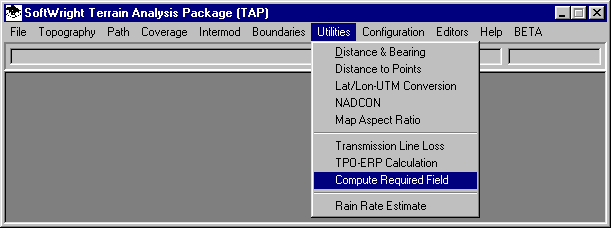
Q: How do I know how much signal is needed at a location?
A: When TAP computes field strength from a base station over an area, or received field strength at the end of a point-to-point path, the values are computed in dBu (short for dB above one microvolt per meter, or dBuV/m). This enables the computed field information to be used with any number of receiver configurations.
Different receiver equipment configurations require different field strength levels for successful operation. Ultimately, the major factor is the manufacturer’s specification for the required voltage (usually in microVolts, or uV) or power (usually in dB above one milliWatt, or dBm) at the receiver input terminals. But numerous other factors (such as antenna gain, transmission line losses, etc.) must be considered to decide if the field strength available at the antenna will produce an adequate value of voltage or power at the receiver input.
TAP provides a function for this calculation. (The equations are included in other documentation). In the Utilities menu, select "Compute Required Field":

The Required Field Strength Lookup form is displayed. You can use this form to enter the available information and compute the required field strength in dBu, or you can enter a value of field strength in dBu (for example, at a particular location in a coverage area) and compute the available voltage or power at the receiver input.
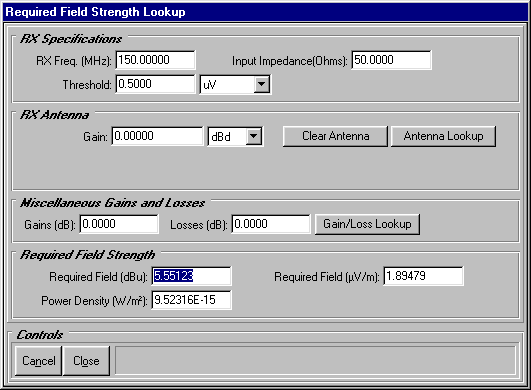
Enter the values for your system:
RX Freq: Enter the frequency (in megahertz). Note that this form is also used as described below, from other parts of the TAP software, such as in the facility data base lookup functions. In those cases, the receiver frequency is specified elsewhere and cannot be changed on this form. The value will be displayed but cannot be changed (in this case the background of the frequency field will be grey).
Input Impedance: Enter the receiver input impedance, usually 50 Ohms.
Threshold: Enter the receiver manufacturer’s specification for the required input to the receiver. You can change the units with the pulldown list.
RX Antenna: You can enter the antenna gain directly on the form, or you can use the Antenna Lookup button to find an antenna in the antenna library. The gain of the antenna you select will be inserted into the gain value on this form. If you select an antenna with a directional pattern, note that the major lobe gain is always used for the mobile receiver in area coverage studies, but the pattern information will be included if you are using the antenna with the receive facility in a point-to-point link study. The "Clear Antenna" button is used to remove the gain and pattern information.
For example, you can enter a 3dB gain antenna and see that the required field strength changes.
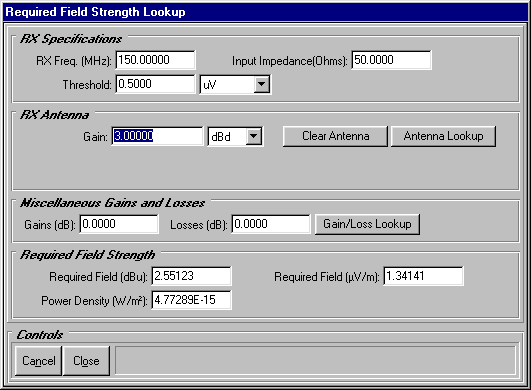
This demonstrates that for the same receiver input requirement, increasing the antenna gain enables the receiver to have the necessary input voltage even with a lower value of field strength.
Gains, Losses: Enter any gain (such as pre-amps) and loss value associated with the receiver. To provide additional detail, you can click the "Gain/Loss Lookup" button. This will display the "Miscellaneous Gains\Losses Lookup" form.
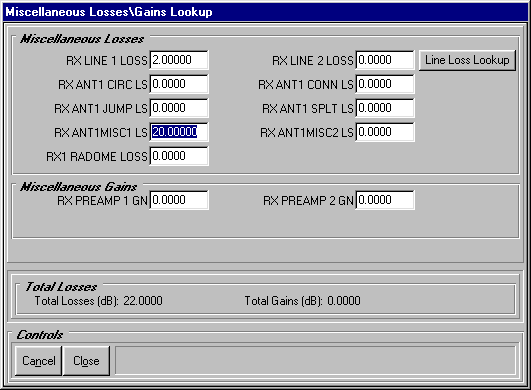
With this form, you can enter several different loss values, such as circulators, jumpers, radomes, connectors, splitters, etc. When the cursor is either the "RX Line 1" or "RX Line 2" fields, you can use the "Line Loss Lookup" button to select a transmission line from the TAP library and compute a line loss value.
For example, entering an estimated line loss of 2dB, and a miscellaneous loss of 20dB (for body losses associated with a mobile unit in a building) the total cumulative loss is 22dB. Click the "Close" button to return to the required field form.
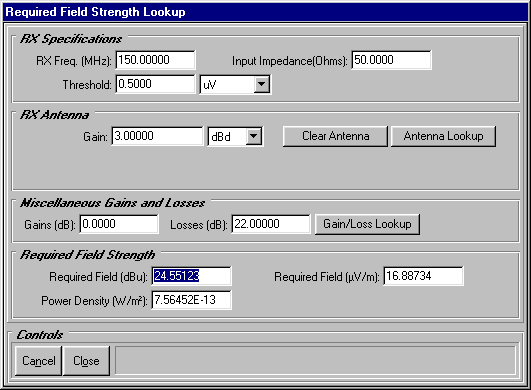
Now this example shows that with the additional losses, a higher field strength is required to provide the specified receiver input value.
You can also enter a value of field strength in dBu, and the resulting available input voltage will be computed. For example, suppose the receiver described above is used at a location where the available field strength is 21dBu.
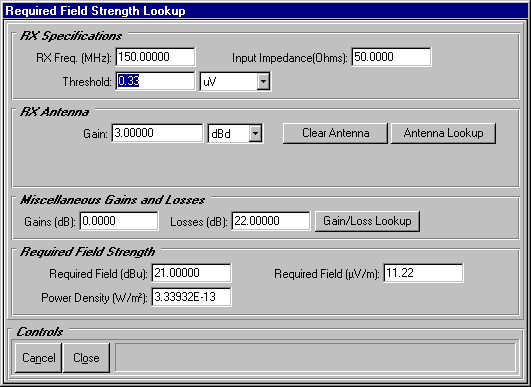
Enter 21 as the "Required Field" (you must use the mouse or tab to move out of the text area after you enter the value). The computed receiver input is now 0.33uV, below the manufacturer’s specified required value.
It is important to include possible loss factors when computing the relationship between the field strength and input to the receiver. Ignoring these value will result in less accurate predictions of coverage areas, link fade margins, etc.
The Required Field function is also available from other parts of TAP, such as the Fixed Facility and the Mobile Facility lookup functions:
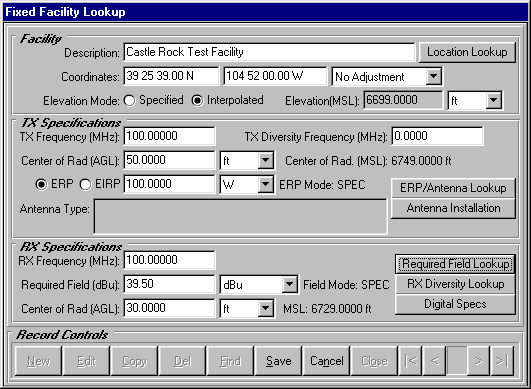
|
|
Copyright 2000 by SoftWright LLC